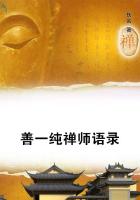But the main part of mythology is the work of the imaginative reason, which makes reality its object, but yet has no other means of so doing, than that of sensuous representation, so that the gods make their appearance in human guise. Mythology can now be studied for art, &c. But the thinking mind must seek out the substantial content, the thought and the theory implicitly contained therein, as reason is sought in Nature. This mode of treating mythology was that of the Neo-platonists ; in recent times it has for the most part become the work of my friend Creuzer in symbolism. This method of treatment is combated and condemned by others. Man, it is said, must set to work historically alone, and it is not historic when a theory unthought of by the ancients, is read into a myth, or brought out of it. In one light, this is quite correct, for it points to a method adopted by Creuzer, and also by the Alexandrians who acted in a similar way. In conscious thought the ancients had not such theories before them, nor did anyone maintain them, yet to say that such content was not implicitly present, is an absurd contention. As the products of reason, though not of thinking reason, the religions of the people, as also the mythologies, however simple and even foolish they may appear, indubitably contain as genuine works of art, thoughts, universal determinations and truth for the instinct of reason is at their basis. Bound up with this is the fact that since mythology in its expression takes sensuous forms, much that is contingent and external becomes intermingled, for the representation of the Notion in sensuous forms always possesses a certain incongruity, seeing that what is founded on imagination cannot express the Idea in its real aspect. This sensuous form produced as it is by an historic or natural method, must be determined on many sides, and this external determination must, more or less, be of such a nature as not to express the Idea. It may also be that many errors are contained in that explanation, particularly when a single one is brought within our notice; all the customs, actions, furnishings, vestments, and offerings taken together, may undoubtedly contain something of the Idea in analogy, but the connection is far removed, and many contingent circumstances must find their entrance. But that there is a Reason there, must certainly be recognized, and it is essential so to comprehend and grasp mythology.
But Mythology must remain excluded from our history of Philosophy. The reason of this is found in the fact that in Philosophy we have to do not with theorems generally, or with thoughts which only are implicite contained some particular form or other, but with thoughts which are explicit, and only in so far as they are explicit and in so far as a content such as that belonging to Religion, has come to consciousness in the form of Thought. And this is just what forms the immense distinction which we saw above, between capacity and actuality. The theorems which are implicite contained within Religion do not concern us; they must be in the form of thoughts, since Thought alone is the absolute form of the Idea.
In many mythologies, images are certainly used along with their significance, or else the images are closely attended by their interpretation. The ancient Persians worshipped the sun, or fire, as being the highest existence; the first cause in the Persian Religion is Zervane Akerene - unlimited time, eternity. This simple eternal existence possesses according to Diogenes L?rtius (I. 8), "the two principles Ormuzd and Ahriman, the rulers over good and evil." Plutarch in writing on Isis and Osiris (T. II. p. 369, ed. Xyl.) says, "It is not one existence which holds and rules the whole, but good is mingled with evil; nature as a rule brings forth nothing pure and simple; it is not one dispenser, who, like a host, gives out and mixes up the drink from two different barrels. But through two opposed and inimical principles of which the one impels towards what is right, and the other in the opposite direction, if not the whole world, at least this earth is influenced in different ways. Zoroaster has thus emphatically set up the one principle (Ormuzd) as being the Light, and the other (Ahriman) as the Darkness. Between the two is Mithra, hence called by the Persians the Mediator." Mithra is then likewise substance, the universal existence, the sun raised to a totality. It is not the mediator between Ormuzd and Abriman by establishing peace and leaving each to remain as it was; it does not partake of good and evil both, like an unblest middle thing, but it stands on the side of Ormuzd and strives with him against the evil. Ahriman is sometimes called the first-born son of the Light, but Ormuzd only remained within the Light. At the creation of the visible world, Ormuzd places on the earth in his incomprehensible kingdom of Light, the firm arches of the heavens which are above yet surrounded on every side with the first original Light.















